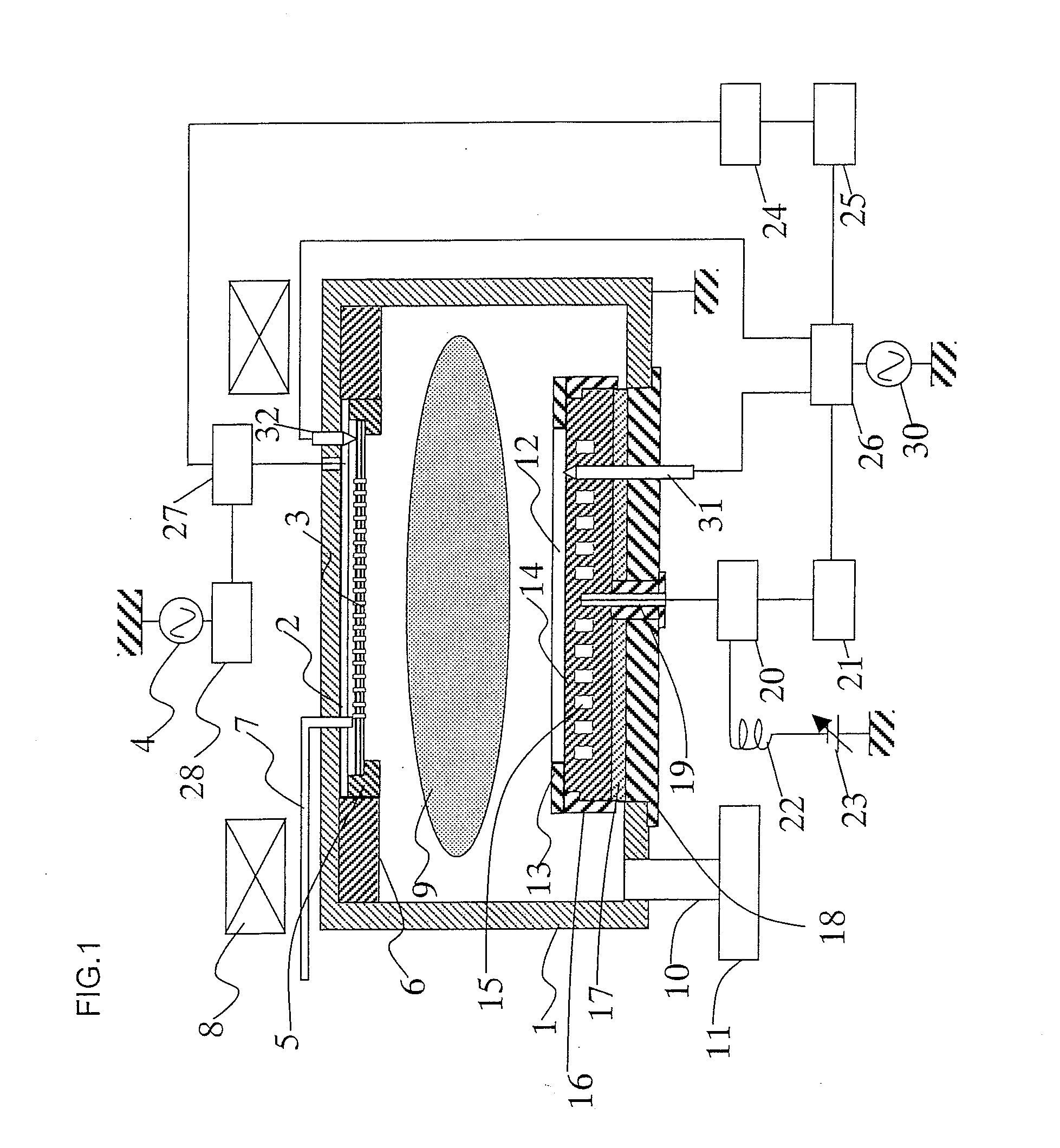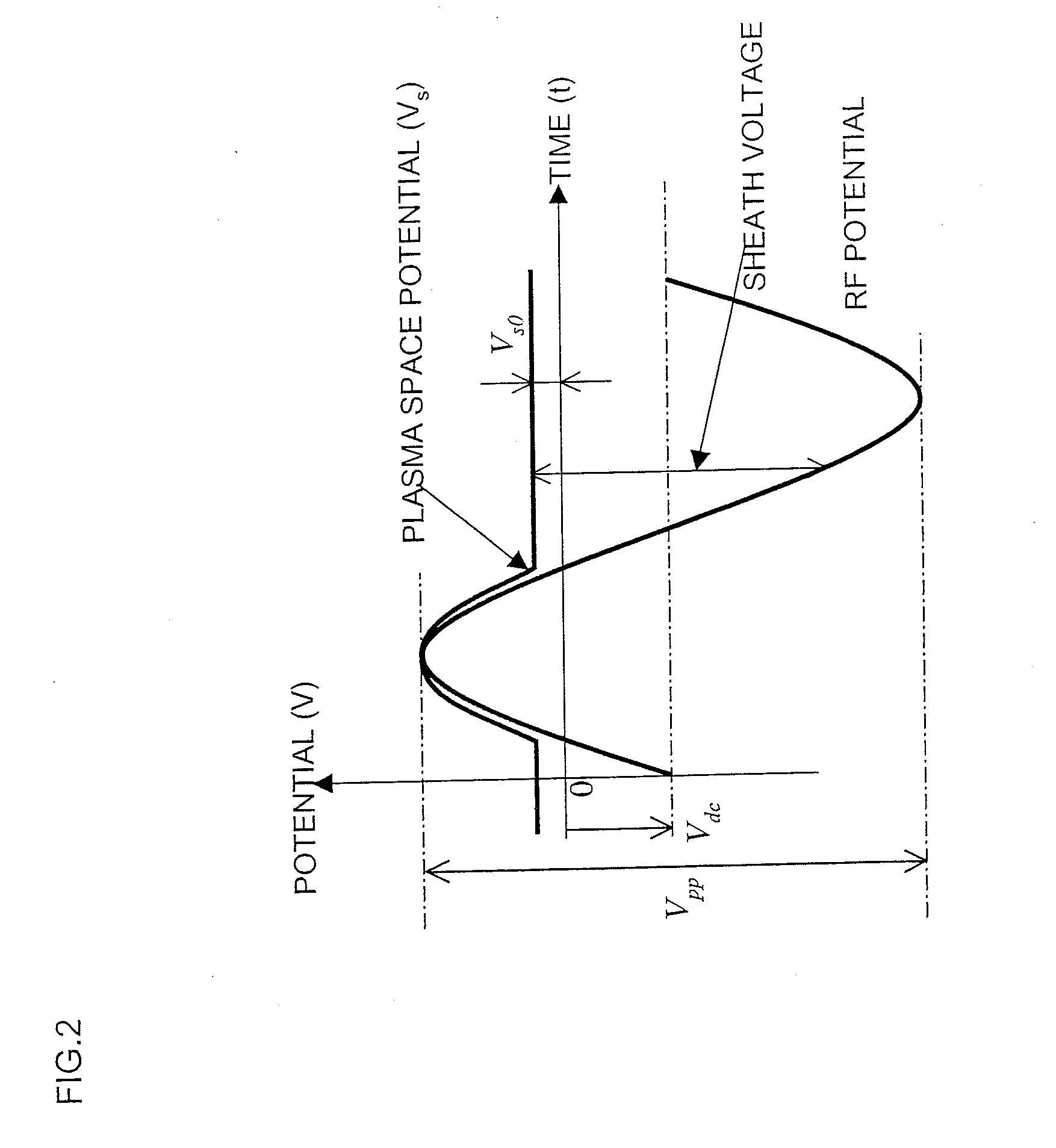Plasma Processing Apparatus And Method For Controlling The Same
a processing apparatus and plasma technology, applied in the direction of electrical apparatus, basic electric elements, electric discharge tubes, etc., can solve the problems of not being able to guarantee the phase difference between the voltage actually appearing at the upper and lower electrodes, not being able to guarantee the phase difference of the voltage generated at the electrodes as controlled, and not being able to disclose the method of ensuring the achievement of the object by phase control. to achieve the effect of high accuracy
- Summary
- Abstract
- Description
- Claims
- Application Information
AI Technical Summary
Benefits of technology
Problems solved by technology
Method used
Image
Examples
second embodiment
[0066]Based on the above fact, the present invention utilizes the RF transmitted in the plasma to perform phase control of the bias. In order to suppress the generation of contaminants, it is necessary to minimize the energy of ions accelerated toward the earth. Based on the above description, the conditions for realizing this is equal to that for minimizing the rise of plasma potential by the RF bias. the present invention utilizes these conditions, and the schematic view of this embodiment is illustrated in FIG. 3.
[0067]In this embodiment, a microelectrode 40 is inserted near the vacuum vessel wall, for receiving the RF transmitted through the plasma. The signal generated in the microelectrode 40 includes the RF from the first, second and third RF power supplies 4, 21 and 25 and their harmonics, the plasma floating potential and noise components. It is possible to use an analog filter or a digital filter (such as fast Fourier transform) in order to detect the RF from the second RF...
third embodiment
[0072]From the viewpoint of controlling the ion impact on the vacuum vessel wall, it is possible to adopt a means to detect the substances being released from the wall. the present invention is made from this viewpoint, and the schematic view thereof is illustrated in FIG. 5. The substance released from the wall is subjected to collisional excitation in the plasma by electrons, and emits light of a wavelength specific to that substance. By collecting this light through a window and a collimator lens 51 to a spectroscope 52, the intensity of the wavelength specific to the substance can be obtained at the spectroscope 52. The emission intensity is used as a control signal for controlling a phase controller 29.
[0073]The arrangement of FIG. 5 was used to generate oxygen plasma (electron density: approx. 3×1016 cm−3, electron temperature: approx. 2.5 eV). Using an aluminum having an alumite treated surface (anodized aluminum surface) as the vacuum vessel 1, the phase of the phase control...
PUM
 Login to View More
Login to View More Abstract
Description
Claims
Application Information
 Login to View More
Login to View More - R&D
- Intellectual Property
- Life Sciences
- Materials
- Tech Scout
- Unparalleled Data Quality
- Higher Quality Content
- 60% Fewer Hallucinations
Browse by: Latest US Patents, China's latest patents, Technical Efficacy Thesaurus, Application Domain, Technology Topic, Popular Technical Reports.
© 2025 PatSnap. All rights reserved.Legal|Privacy policy|Modern Slavery Act Transparency Statement|Sitemap|About US| Contact US: help@patsnap.com



